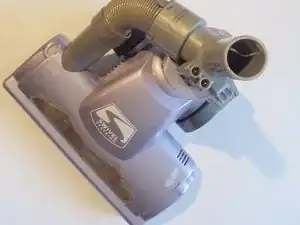
Brush Roll
These are some common tools used to work on this device. You might not need every tool for every procedure.
A vacuum cleaner is a device that uses an air pump to create a partial vacuum to suck up dust and dirt, usually from floors and sometimes from other surfaces as well. The dirt is then collected for later disposal. Vacuum cleaners can either be corded or cordless. Cordless vacuums require charging in a charging dock.
Vacuums either use vacuum bags or reusable canisters for dirt collection and disposal. Vacuum canisters are more environmentally friendly, eliminating the need for a disposable bag. Vacuum canisters are often easily detachable and include some sort of trigger that allows users to propel the contents of the canister into a trash can.
Handheld vacuum cleaners are designed to fit in tight spaces or quickly clean up crumbs and other messes. Alternatively, upright and stick vacuums are designed for uses of a longer duration that clean an entire room or house. Robotic vacuums, such as Roombas, are designed to autonomously clean areas without user interaction. They achieve this by sensing their environment and avoiding obstacles as they travel around a room, vacuuming as they move.
Vacuum cleaners have a variety of appearances and means of operation depending on their type and manufacturer. They are all generally electrically operated. Several of the types listed below can be found in one unit (like backpack canister, or upright with detachable canister) to provide a description of the vacuum that will be helpful when troubleshooting. The most important identifying information is the manufacturer's label, which will provide a model number to allow you to find reliable repair and function information.